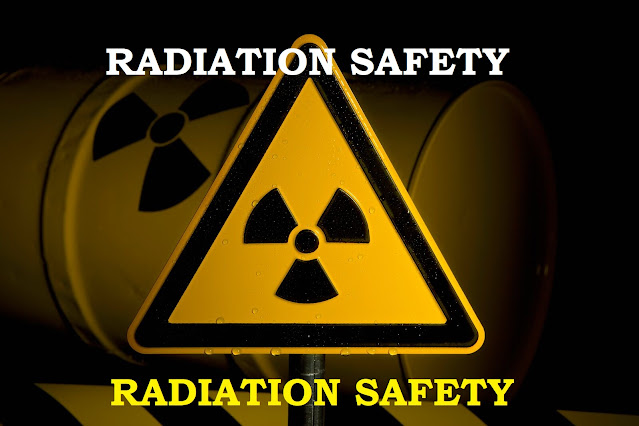RADIATION
SAFETY
Radiation
is categorized into two like Ionizing Radiation & Non-ionizing Radiation.
Radiation
exposures is one of the serious health hazards to the employees.
Ionizing
Radiation - Electromagnetic radiation and/or electrically charged or neutral
particles which will interact with gases, liquids, or solids to produce ions.
Examples include x-rays, gamma rays, protons, neutrons, and alpha particles.
Non-ionizing
Radiation - Electromagnetic radiation with insufficient energy to produce
ionization of atoms. Non-ionizing radiation energy usually is transformed into
heat. Examples include microwaves, television and radio waves, visible light,
infrared and ultraviolet radiation, and laser radiation.
Ambulance Inspection Checklist
Radiation
safety guidelines
The below
listed radiation safety guidelines will be adhered to by employees when the
potential for exposure to ionizing and/or non-ionizing radiation exists.
1. On site
procedures.
a. Evaluate
the work site radiation safety procedure and program, if available, and
Emergency Action or Preparedness Plan, where applicable.
b. Identify
& communicate all known potential sources of radiation and assess the
hazards using site-supplied data as well as measurements obtained by employees.
c. If it
has been determined that there are potentially harmful radiation sources,
contact the respective department for sampling procedures and appropriate
self-monitoring equipment (TLD badges, neutron badges, other surveying
instrumentation, etc.) for determining the personal exposure levels of employees.
d. Appraise
work site hazard controls for effectiveness and take required actions.
e.
Determine the best means of minimizing exposure to the radiation hazard using
source shielding and distance as the primary methods of protection. Limiting
the duration of exposure will only be employed as a last resort for controlling
a radiation hazard to which employees may be exposed, and even then, only with
the consent of the responsible Manager(s). Employees will avoid direct exposure
to the “beam” of radiation emitted by a source. Provide the necessary training
to the required employees.
f. As Class
3b and 4 lasers can pose a serious hazard to the eyes, determine the type of
eye protection to use wherever engineering controls are not feasible or where
there is a likelihood of exposure to the beam. Make all employees aware of this
and provide signages.
g. Seek support
from the Health Response Team, through the responsible Manager(s), for
additional technical assistance
Fall Protection in Construction – OSHA
2.
Appropriate Personal Protective Equipment (PPE) use determination.
a. Review
the employer’s radiation safety program and PPE requirements, including the PPE
hazard assessment. Display the PPE Matrix.
b.
Determine appropriate PPE and personal monitoring needed, based on the source
and type of radiation.
c. Select
and use appropriate PPE (shielding, equipment, work clothing) to minimize
radiation exposure. If such equipment is not available at the work site or at
the office, then the responsible Manager(s) will be immediately consulted
before taking any action that may present further exposure to radiation.
PART 3 | HSE Interview Questions and Answers
Safety Measures for Electrical Room





No comments:
Post a Comment